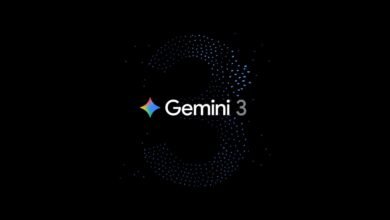Mastering LLM Alignment: A Complex but Achievable Goal

▼ Summary
– Brand alignment has evolved from a “nice-to-have” to a necessity for LLM visibility, as LLMs expose weak alignment and reward strong alignment with increased visibility.
– Companies at a “maturity inflection point” often fail because their marketing doesn’t align with their product’s success, leading to higher costs and the need to either pivot or spend more.
– Poor brand alignment, such as mismatched messaging between ads and websites, results in higher marketing costs and reduced performance, a long-standing issue now amplified by LLMs.
– LLMs make brand misalignment visible by revealing inconsistencies in how brands are perceived across content teams, citations, and third-party sources, requiring internal alignment.
– Achieving brand alignment involves creating a clear, unified brand identity and forming cross-functional teams to ensure consistency across all marketing efforts for better LLM performance.
Achieving strong brand alignment has become a non-negotiable element for visibility within Large Language Models (LLMs), transforming what was once a peripheral concern into a central performance driver. Over the past decade, observing the intersection of brand marketing and search has revealed a dramatic shift. The conversation has moved from treating alignment as a luxury to recognizing it as an absolute necessity. LLMs possess the capability to penalize weak brand alignment while significantly rewarding cohesive and consistent brands with greater visibility.
A telling experience involved a prospective enterprise client who had recently invested in a high-profile Super Bowl advertisement. It became immediately apparent they had reached a critical “maturity inflection point.” This occurs when a brand’s initial success, often propelled by an excellent product launched under ideal conditions, is mistakenly attributed to marketing prowess. The reality is that momentum from that initial launch carried them, but their marketing strategies failed to evolve alongside their market and audience.
Brands facing this inflection point confront a stark choice: they can pivot and mature their approach, or they can attempt to compensate by spending more on marketing to maintain performance. The client in question was deeply frustrated by the suggestion that their brand strategy was the root of their performance and cost issues. They couldn’t grasp the connection, but the answer was simple: alignment. The core issue was a profound misalignment between the emotional appeal of their expensive ad and the messaging on their website homepage. Users who searched for the brand after seeing the ad found a disconnected experience, leading to quick exits and wasted investment.
This problem of misalignment is not novel, but its consequences are magnified in the age of LLMs. For years, search marketers have discussed a similar concept under the framework of E-E-A-T (Experience, Expertise, Authoritativeness, and Trustworthiness), advising websites to “stay in their topical lane” to build authority. This is fundamentally brand alignment viewed through an algorithmic lens. A lack of a strong, consistent brand identity means search algorithms struggle to recognize a site as an authoritative source, making organic visibility harder and marketing more expensive.
LLMs have made the abstract cost of misalignment startlingly concrete. They act as a mirror, reflecting how well, or how poorly, a brand’s identity is understood across the digital landscape. Companies can now directly observe when different LLMs interpret their brand in conflicting ways or when outdated perceptions linger in AI-generated responses. Citations within these outputs often pinpoint the source of the confusion, whether it’s an internal content team, a press release, or a third-party site.
Consider a hypothetical scenario where a well-known tool company, aiming to expand into the commercial market, discovers an LLM describing its products as “suitable for smaller yards.” This misperception could be directly traced back to the company’s own website imagery featuring residential use and support pages explicitly stating the products are not for commercial applications. Correcting this would require aligning multiple internal teams, from web content to product support, and potentially addressing product design itself if material components contribute to the perception of being non-industrial.
So, how does a brand tackle this complex challenge? The process is fundamentally two-fold.
The first step is establishing conceptual alignment. This foundational work requires the entire organization to develop a crystal-clear, unified understanding of the brand’s core identity. It moves beyond clichéd mission statements to answer deeper questions: Why is our offering important beyond profit? What problem in our industry truly bothers us? What specific mental state do we want to create for our customers?
The goal is to distill a brand identity concept that is meaningful, clear, and differentiated. For instance, a minivan manufacturer might decide its core concept is “meticulous engineering for meaningful family experiences,” rather than trying to position the vehicle as “sporty.” This core concept then becomes the filter for all marketing decisions, from keyword targeting and social media content to trade show booths. Every action must communicate and reinforce this singular idea.
The second step is creating organizational alignment. A brilliant core concept is useless if disparate teams across the company are not synchronized. The most effective solution is to form a dedicated, cross-functional task force or “guild.” This group should include representatives from every team that influences how the brand appears in LLMs: SEO, social media, public relations, product development, customer support, and owned media.
This federation is responsible for socializing the core brand concept throughout the organization and ensuring its consistent application. Leadership must champion this initiative, embedding accountability through regular audits that measure each team’s contribution to LLM alignment. These audits provide concrete feedback and actionable steps for improvement, turning the abstract goal of alignment into a measurable, operational reality.
While developing the deep brand alignment required for LLM consistency is undoubtedly challenging and multi-layered, it is an achievable goal. The difficulty stems from the need to construct a solid foundation that often lies beneath the surface of daily marketing activities. However, by methodically building a unified brand concept and creating the internal structures to support it, brands can successfully navigate this new paradigm and secure the consistent visibility they need.
(Source: Search Engine Land)





